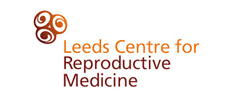“State of the IVF Sector” report published
The HFEA publishes report providing an overview of the fertility sector
Today, the Human Fertilisation and Embryology Authority (HFEA) published its first “State of the IVF Sector” report. The report can be read here:
https://www.hfea.gov.uk/about-us/news-and-press-releases/2017-news-and-press-releases/press-release-multiple-births-success-as-hfea-publishes-first-state-of-the-ivf-sector-report/
As Chair of The British Fertility Society, I issued the following statement in response to the report:
“We welcome the report, which shows the extraordinary commitment our specialty has to transparency.
“Every year we get better at reporting to the regulator so we would actually expect to see a rise in the number of reported incidents. The rise is also generally in parallel with a rise in the number of treatment cycles.
“We are confident that, in reality, there is no evidence that practices have changed or that there ought to be concerns about the sector. The fact is we are the most highly regulated medical specialty in the UK and we consistently uphold very high standards of clinical practice and care.
“The British Fertility Society is working very closely with the HFEA to help drive down the rate of adverse incidents. In particular, we are working together to ensure good practice in the reporting of ovarian hyper stimulation syndrome. We have developed evidence-based guidelines to help limit the incidence of this complication and to provide a resource for clinicians looking after women who develop the condition.
“It is hugely satisfying to see the significant fall in the number of multiple births. This is a goal we have worked on closely with the HFEA.
“With over 75,000 treatment cycles per year we have seen a significant increase in the chances of having a baby, which on average is about 32% of all cycles and at the same time a huge reduction in multiple pregnancy. So the planned transfer of a single embryo has not reduced the chance of success.
“By reducing the number of embryos implanted and at the same time improving our success rates, we protect parents and babies from the potential complications that come with twin or triplet pregnancies and births.
“In the 40 years since Louise Brown, the world’s first IVF baby, was born in the UK, IVF has revolutionised the treatment of infertility and the UK has lead the way with both innovative research and also careful regulation by the HFEA.
“It is very disappointing that the NHS only funds 40% of cycles. If three full cycles were funded, as recommended by NICE, we know that at least 80% of couples would end up carrying a baby. IVF is cost-effective and the economic benefit to Society of those born from IVF far outweighs the cost.”
From embryo to aspiring medical student
One of 'my' IVF babies visits me for advice on becoming a fertility doctor
How she’s grown! From embryo to aspiring medical student, I last saw 6th former, Lucy – one of ‘my’ IVF babies – as a 2-day embryo. She came to see me for advice on becoming a fertility doctor, so she can help bring children into the world via IVF, too, which is such a privilege.
In those days, we transferred embryos on day 2 of development, so things have changed quite a bit.
It was lovely to see you, Lucy, and I wish you all the very best.
40 years of IVF
A huge milestone in reproductive medicine
It’s amazing to think that it’s almost 40 years since the birth of Louise Brown, the first IVF baby – conceived after many years of perseverance by Bob Edwards, Patrick Steptoe and Jean Purdy. I was doing my A levels at the time, so I wasn’t really there at the beginning, but not far off. When I started working in the field of reproductive medicine in the 1980s, the HFEA hadn’t yet been founded and IVF practices weren’t really regulated or structured as they are now.
I remember being inspired by Bob Edwards who was the scientific director of the clinic that I was working in and always amazed to see babies born that I had first observed as a cluster of cells down a microscope. So much has changed – too long a list to go through in this short paragraph – and, with over 7 million babies born as a result of IVF worldwide, the technologies continue to advance – although sadly the woeful lack of funding from the NHS to provide equal and adequate access around the UK has become even worse.
I love my job and the team I work with, who I consider to be like a big family all working together (scientists, embryologists, nurses, counsellors, medics and, of course, the administrative and support staff who keep the wheels oiled). It is humbling to have been able to help so many couples achieve their desired families and also hopefully to have done our best to support those whose dreams sadly didn’t come true. Our annual Fertility Awareness Week is an important time to shout out about the affect infertility has on people and how in reality IVF and its associated treatments are cost-effective and worthy of proper funding by the NHS.
Infertility is not a lifestyle choice
National Fertility Awareness Week
I wanted to share some thoughts following on from this year’s National Fertility Awareness Week, which was full of extremes. Most of us focussed on the appalling lack of fair and equitable funding for IVF and other assisted conception treatments, whilst at the end of the week we spent two days at the “Fertility Show” which displays the best and the worst of the “Fertility Industry”. Those of us from the Professional Societies (BFS, BAS, ACE, SRF, BICA, ABA) manned our usual stand and did our best to help the bewildered “customers” attending the show – we also tried to populate the talks with evidence-based medicine and science. Many exhibitors were once again peddling unproven “therapies” or trying to entice people to go overseas for treatments that can be delivered better here in the UK.
The HFEA also published data revealing that more than 300,000 children in total have now been born in the UK from licensed fertility treatment since 1991 – and we have to remember that these data were collected some 13 years after Louise Brown was born on the 25th of July 1978. Indeed she was probably being conceived in a dish about 40 years’ ago now! And worldwide at least 7 million babies have been born as a result of IVF. Furthermore the HFEA also reported that the total number of treatment cycles carried out in UK clinics also passed a significant milestone in 2015 (the most recent data available), breaking through the million barrier. The overall number of treatments carried out since 1991 being 1,034,601. The HFEA report that the average age of women having fertility treatment is 35 years and this has remained largely static over recent years. Interestingly also almost a third of all IVF and DI babies since 1991 were born in the last six recorded years (2010 to 2015).
This week we also saw an article on the number of celebrities who are conceiving in their forties, usually without saying that this is as a result of egg donation treatment. Commenting on this in the press I stated that: On its own, this finding is not particularly concerning, but in the context of poor or absent fertility education, it is a worry that women are acquiring knowledge about fertility from celebrity focused magazines. We think fertility should be included in health and social education for teenagers and young people. Clearly there are a number of celebrities who have conceived in their late thirties and early forties and that’s completely believable. The fact is that if a woman is ovulating and there are no other fertility issues, she retains a chance of pregnancy and therefore many women will conceive at older ages. That said, the likelihood of conception per cycle of trying drops as a woman crosses 35, and the drop becomes steeper in her late thirties.
Also, the risk of losing the pregnancy to miscarriage rises, as does the risk of certain genetic conditions for the child (e.g. Chromosome 21 trisomy Down Syndrome). This is basically down to the fact that eggs also age and some women may indeed run out of time to start or complete their families if they start trying in their late 30s or into their 40s because of egg ageing. The net effect is that women who start trying in their late thirties are less likely to have a baby, or will have fewer babies than they wished to.
It’s really important to remember that IVF is not an easy fix – it’s hard, both physically and emotionally, and it won’t always be successful. But treating infertility, which is a real disease, recognised by the WHO, has been shown to be cost effective and can significantly improve the overall wellbeing of families. Relative to many other medical interventions, it is quite inexpensive, and it’s a travesty that NHS funding has been cut by so many clinical commissioning groups over the past few years.
This brings us back to the hard facts of the funding problems: Whilst the NICE Guidance states that all eligible couples should be entitled to 3 full cycles (including the use of frozen embryos) and we know that this will give them an 80-85% chance of having a baby, using latest statistics – and indeed many will not require the full three cycles, with on average 30% conceiving with one cycle (and in the best cases maybe 40-45%).
The actual costs of funding properly would be about £77 million pounds – which equates to £1.29 per head of the UK population. This is a tiny fraction of the NHS budget of £116 billion (approx. (£2,000 per person). In the UK we spend 9.1% of our GDP on healthcare and this is falling – and is much lower than most of the “developed world”.
Currently only 12% of the 208 CCGs in the UK fund a full three cycles – a drop of 50% in the last 4 years. 23% fund 2 cycles, 61% one cycle (of which half don’t fund the use of frozen embryos) and 4% fund no treatment at all. In Scotland 3 full cycles are funded, whilst this is 2 in wales and 1 for Northern Ireland. So we must remove the postcode lottery and provide equity around the UK.
There was an interesting debate on You and Yours (BBC Radio 4) that I participated in. This was a phone in which presented a variety of views from listeners about the funding of IVF. Amanda Doyle the CCG commissioner from Blackpool said that they are the most deprived part of the UK which was her excuse for only funding 2 cycles – I turned this around and said if they can actually afford two cycles in the most deprived part of the country, why cannot the whole country fund at least two – and preferably the full three?
Interestingly the best areas for funding are in Greater Manchester (Bury, Heywood, Middleton, Rochdale, Oldham, Thameside & Glossop) and the worst Herts Valleys, Cambridge and Peterborough, Croydon, South Norfolk, Basildon & Brentwood, Mid-Essex and North East Essex.
On You and Yours someone phoned in and suggested that people with infertility should adopt rather than have treatment funded – another listener responded by saying, quite rightly that “adoption shouldn’t be the burden of people with infertility.”
IVF is seen to be an easy target – but Infertility is a serious medical condition, resulting in huge stress and distress and caused itself by a large number of different medical problems. Indeed it is the second commonest reason for women of reproductive years to visit their GP. IVF is cost effective and has shown to be an economic benefit to Society.
The bottom line is that you cannot put a price on a baby!
Fertility Treatment Debate on BBC Radio 4’s ‘You and Yours’ Programme
Should the NHS pay to treat fertility problems?
This week it’s National Fertility Awareness Week, and I’ve been contributing to various debates in the media on infertility and IVF treatment. Yesterday, I joined Radio 4’s ‘You and Yours’ programme to discuss cut-backs in the funding of IVF treatment by the NHS and the ‘post-code lottery’ around the country. Some Clinical Commissioning Groups (CCGs) will fund the 3 cycles recommended by NICE for women under the age of 40, some will fund 1 or 2, and others don’t fund any at all. It all depends on where you live, which I believe is deeply unjust.
You can listen to the programme here:
http://www.bbc.co.uk/programmes/b09bxk66
Do you Suffer from Polycystic Ovary Syndrome?
Interview with The Fertility Podcast
Over the summer, I chatted to the Fertility Podcast about Polycystic Ovary Syndrome (PCOS). A great deal of the research I have done over the years has been on PCOS, and I was very happy to talk about the subject. You can hear my interview here:
Launch of Fertility Support Group at Leeds Fertility
At Leeds Fertility, we recognise the importance of diet and lifestyle factors in preparing for IVF treatment and a healthy baby. Following feedback from patients, we decided to launch a free fertility and preconception care support group offering information on evidence-based diet and lifestyle factors that can affect your chances of conceiving either naturally or through IVF.
This group was launched in partnership with a new venture, Balance Fertility, that focusses on turning the widespread evidence of the impact of these things on fertility into clinical programmes and practical advice for patients. The sessions were delivered by Reproductive Biologist, Grace Dugdale, who has spent many years researching how underlying health impacts male and female fertility and the health of babies born to couples experiencing fertility problems. The excellent feedback we received from patients participating in the group showed how much having a credible source of evidence based information is needed with 100% of participants rating the programme as excellent or good and happy to recommend the group to a friend.
The programme culminated in a cookery class that allowed patients to put into practice some of the advice covered during the course, and encouraged them to cook at home with fresh, nutrient-rich ingredients with recipes that followed some of the dietary recommendations to support good fertility. The cookery class was exceptionally well-received by patients who both gained important skills and knowledge, and thoroughly enjoyed the process and social and peer-supports aspects of the class.
The pilot programme was launched in June and we will be repeating the support group in September. A Balance Fertility website will be available for further information, as well as registration information for the next round of the course. Please email leedssupport@balancefertility.co.uk for further information.
Daily Mail misses the mark on fertility
Last week the Daily Mail published an undercover investigation into certain aspects of IVF practice in the UK (reported elsewhere in BioNews this week). Whilst this has highlighted some issues, unfortunately the meaning of published statistics has been misinterpreted and certain aspects of the investigation have been given far more weight than is just. Rather than serving the public good, this has the potential to leave vulnerable patients scared and confused.
The IVF sector is the mostly highly regulated of all areas of medicine in the UK, nonetheless there may well be pockets of bad practice and clearly there is room for improvement in some areas. This is the case in any branch of medicine and the fertility sector is certainly no worse than any other. Information provided to patients must enable them to discern for themselves whether an individual clinic is offering appropriate advice and treatment. My concern is that this report muddies the waters, making it difficult for patients to make an informed choice about their care.
The fertility sector has a higher proportion of private practice because of a lack of NHS funding and the associated postcode lottery. I have been campaigning hard for this to change and, on behalf of the British Fertility Society (BFS), Fertility Network UK and Fertility Fairness am chairing the IVF Pricing Committee for NHS England. The lack of NHS funding has created a unique scenario where all treatments must be itemised and charged for (either to CCGs when there is NHS funding or directly to patients when there is not).
So we are dealing with the symptoms of a much more serious problem, namely that the majority of patients dealing with infertility are unable to access sufficient NHS funded treatments to become pregnant.
The Daily Mail highlighted a few areas where they perceived concern. One of these is egg sharing, whereby women donate some of their eggs during the course of their own IVF treatment cycle in order to be able to help fund that treatment. Donating or sharing eggs for IVF is a completely legitimate practice, and was already happening in the late 1990s. In other countries both egg and sperm donors would be paid for their donation, but here it was decided that it was wrong to incentivise in that way and risk exploiting people who are in poverty. We are only allowed to compensate patients for reasonable expenses, and couples must be very clear about the issues surrounding such treatment.
Egg sharing has been shown to work well for the vast majority of patients and is, of course, dependent upon very careful and thorough counselling about the implications. The Daily Mail’s investigation has, however, highlighted some questionable practices that may have affected some patients who participated in egg sharing in return for free or discounted treatment. The UK regulator, the Human Fertilisation and Embryology Authority (HFEA) , is rightly taking this seriously. But this, from my viewpoint in active clinical practice, and contrary to the highly critical view expressed by Professor Winston, is not something that is universal in the field.
All couples facing infertility deal with ethical and emotionally challenging decisions around their course of action and their genetic association with their children: anything from adoption to egg-sharing, sperm donation or mitochondrial donation requires complex moral and ethical considerations. There is a myriad of underlying causes including lack of fertility education in schools, lack of NHS funding for IVF that create a financial incentive for patients who struggle to pay for IVF privately and lack of appropriate healthcare advice during reproductive years as to lifestyle factors that can affect gamete quality and fertility.
A further investigation into reporting of ovarian hyperstimulation syndrome (OHSS) is somewhat misleading. I do not believe there is a major problem with clinics under-reporting serious cases of OHSS. The numbers reported by NHS hospitals include admissions to hospital after egg collection, the majority of which are for relatively mild symptoms that settle down on their own within a few days – these are very different from full-blown OHSS, which can indeed be very serious. My organisation, the British Fertility Society (BFS), along with the Royal College of Obstetricians and Gynaecologists (RCOG), have taken the lead in developing guidelines on how to prevent and treat OHSS. These guidelines are widely followed across the world.
We at the BFS accept absolutely that there are areas of poor practice in the fertility sector. We do not seek to dismiss valid concerns; exploitation or endangerment of patients is totally unacceptable. We trust that the HFEA will deal with any cases it uncovers and we will encourage our professional community to cooperate in the investigations. Meanwhile, we will continue to argue in support of NHS funding for fertility treatment, the lack of which we believe remains a factor driving potentially contentious practice.
The BFS has written numerous Policy & Practice Papers and guidelines to better inform the profession, alongside our training courses, study weeks and academic symposia. These are attended by those of us in active practice who seek to update our knowledge and ensure that we are providing evidence-based treatments. We are disappointed with the criticism levied at us by Professor Winston in his Daily Mail opinion piece on the investigation – we are a professional body that he himself once chaired. Given this, we would like to send an open invitation to Professor Winston to attend our meetings and hear the latest data and innovations.
The UK leads the way with innovation in IVF and other infertility treatments and the BFS works with our community to share good practice. We also work with the regulators and policy makers to ensure that ethically challenging issues are embraced with tight but permissive regulation. In theory, the UK is one of the best places in the world – scientifically and medically – to be a person dealing with infertility, but without NHS funding for treatment this point is moot.
National Institute for Health and Care Excellence (NICE) recommends that the NHS offers three full cycles of IVF treatment. But the most recent statistics from Fertility Fairness showed that only 16 percent of CCGs were providing three cycles, with 60 percent offering only one, and 22 percent offering two. It’s true that we are experiencing a period of austerity politics and that we have an ageing population, both of which are challenging our NHS. There are also social factors – particularly the increase in numbers of people delaying parenthood until later in life – that are compounding these issues. But it doesn’t have to be this way.
Not treating infertility properly can actually cost the NHS a lot of money: infertility is the second most common reason that a woman visits her GP (the first being pregnancy), and people who are dealing with infertility commonly suffer stress, anxiety, and depression, which can cause lifelong health issues that require treatment. Yet there appears to be some short-sightedness on the part of decision makers in some CCGs – it really isn’t as simple as dividing up the pot of money within the CCG, as there is a net cost of not treating infertility. This cost could be saved if the NICE guidelines were followed.
This article was first published by BioNews:
http://www.bionews.org.uk/page.asp?obj_id=839553&PPID=839506&sid=164
‘Lack of evidence for interventions offered in UK fertility centres’ paper challenged
BMJ publishes response from the fertility sector
The BMJ published my response to its paper entitled ‘Lack of evidence for interventions offered in UK fertility centres’. The letter is co-authored by some of the UK’s leading fertility specialists.
Lack of evidence for interventions offered in UK fertility centres
BMJ 2016; 355 doi: https://doi.org/10.1136/bmj.i6295 (Published 28 November 2016)
Cite this as: BMJ 2016;355:i6295
Re: Lack of evidence for interventions offered in UK fertility centres
To The Editor, BMJ
Dear Dr Godlee
Re: Lack of evidence for interventions offered in UK fertility centres.
We are writing to express our concern regarding the papers by Heneghan et al, (2016) and Spencer et al (2016) owing to their lack of scientific robustness.
We would like to state at the outset that we oppose the provision of procedures or treatments that do not have a scientific basis and we welcome the initiative by the Human Fertilisation and Embryology Authority (HFEA), which has been endorsed by the British Fertility Society (BFS), to introduce a grading scheme for “add-ons”.
Spencer, Heneghan and colleagues have unfortunately obscured their important message by mixing various categories of treatment, not all of which come under the category of “add-ons”. Indeed, a number are accepted components of routine treatment. The papers have grouped together three categories of care: (i) necessary investigations (e.g. assessment of ovarian reserve, which is vital in determining correct dosage of ovarian stimulation drugs to optimise outcome and ensure patient safety), (ii) essential treatments (e.g. surgical sperm retrieval) and (iii) interventions that can be termed “add-ons” – namely an addition to a pathway of care, whether as an additional drug or therapeutic procedure. Many of the items identified have a clearly defined role in specific situations; e.g. for a man with a physical blockage sperm has to be extracted surgically, frozen and used in an IVF cycle combined with intra-cytoplasmic sperm injection (ICSI). For this group of patients, without those interventions (which are clearly not “add-ons”) IVF cannot happen and looking for improved outcomes is irrelevant. Therefore, the papers are inherently flawed as the basis upon which they are structured is clinically and scientifically unsound.
The BMJ disregarded key points made by one of the referees which should have alerted the authors to fundamental flaws in their enquiry: Quoting Dr Avery’s review “For this paper to have the intended impact, the authors need to decide whether to include all procedures for which centres are charging a fee, or whether as the title suggests, they are going to stick to add-ons, specifically those for which claims of increased live birth rates are made.……., in its current form it [the paper] could easily be dismissed by those it targets as having been written by those with no understanding of the field or the technology ….” It is clear that no specialists in reproductive medicine were involved which is why the authors misunderstood and misinterpreted their task. To quote one co-author this is a clear example of “Bad Science” (Goldacre, 2009).
We are fully aware there may be “add-ons” that are not evidence-based, either because the research has not yet been carried out, or because they have been found to be ineffective (Harper et al 2017). The use of intralipid is one such example. This has been clearly stated by the BFS (Nardo et al 2014) and Royal College of Obstetricians and Gynaecologists (RCOG 2016) and so it is perfectly legitimate to criticise a clinic for offering intralipid. However, when it is only 3 clinics (4%) offering this intervention on their websites, it should be clearly stated that this is not mainstream practice or representative of the whole sector.
Treatments that appear more frequently on websites, such as ICSI and blastocyst culture, and the “add-ons” such as embryoglue and endoscratch do have an evidence base. We can present an analysis of each of the 41 items which clarifies the evidence for many and against some. However, it is important to recognise that, although live birth rate is the key outcome measure recommended by the HFEA and something patients need to know, using live birth as the sole indicator of an evidence base oversimplifies a hugely complex process and fails to recognise the significant scientific research underlying decisions to bring treatments into clinical practice.
We are under no illusion that there are sections of the sector that are commercially driven and offering invalidated, costly “add-ons”. Clinics are inspected and called to account by the HFEA, resulting in greater regulation of the fertility sector than any other area of medicine. Furthermore, the HFEA inspectors examine all written information and consent forms that are given to patients, which will always be a truer reflection of clinical practice than the summaries on websites. In the conclusion of the publications, the authors’ own criteria were not fulfilled. The authors were asked “to carry out an independent review of the evidence for fertility treatments additional to IVF”, which they did not do. They only looked at websites and took no account of information provided to or understood by patients at consultations or in the clinics’ written literature. Whether patient literature should be referenced is an interesting concept, as not even that produced by NICE includes references. Nonetheless, we are absolutely clear that websites must provide accurate information that does not mislead patients.
Had the authors sought the input of specialists in reproductive medicine they would have been able to write scientifically sound papers and contributed to a debate (and associated work by the HFEA and BFS) already underway in the sector. To place an article in the public domain that is highly inaccurate and misrepresents the fertility sector is both misleading and deeply unhelpful to patients.
We strongly believe that these papers should not have been published in their current form. Whilst we welcome scrutiny that contributes accurate analysis and informs the mechanisms by which future advances should be brought into clinical practice, our concern is that this should be conducted in a scientifically robust manner that provides clarity to the topic. Given the rapid advances in reproductive medicine, such work is vital and contributes to the natural evolution of the sector’s regulatory machinery. It is important that we work together to promote ethical and innovative patient care.
The key objectives of the BFS are to promote high quality clinical practice and high quality research. To this end, we would be happy to collaborate with the authors to ensure that their research results in valid conclusions.
Yours sincerely
Adam Balen, MD, DSc, FRCOG.
Professor of Reproductive Medicine and Surgery, Leeds &
Chair of The British Fertility Society (BFS).
Lesley Regan, MD DSc FRCOG FACOG
President of the RCOG,
Professor& Head of Department of Obstetrics and Gynaecology, Imperial College & St Mary’s Hospital,London
Sue Avery PhD FRCPath PGDipLaw – referee of the original paper.
Consultant Embryologist & Director of Birmingham Women’s Fertility Centre.
Peter Braude OBE, FRCOG, FRSB, FMedSci
Emeritus Professor of Obstetrics and Gynaecology, King’s College London
Ian Cooke FMedSci, FRCOG, FRANZCOG (Hon.)
Former Chairman, former President of the British Fertility Society and current Chairman of Trustees
Director of Education, International Federation of Fertility Societies, 2004-2011
Emeritus Professor, University of Sheffield
Grace Dugdale BSc, MA.
Reproductive biologist, London
Susan Seenan, Chief Executive, Fertility Network UK
(The UK support organisation for people with infertility)
Yacoub Khalaf MSc MD FRCOG
Consultant Gynaecologist & Sub-Specialist in Reproductive Medicine and Surgery,
Director of the Assisted Conception Unit & Centre for Pre-implantation Genetic Diagnosis, Guys & St Thomas’ Hospital, London
Member of The HFEA.
Anthony J Rutherford FRCOG
Consultant in Reproductive Medicine & Gynaecological Surgery, Leeds.
Past Chair of The British Fertility Society.
Member of The HFEA.
Peter R. Brinsden MB BS FRCOG
Past-President of the British Fertility Society
Former Medical Director Bourn Hall clinic, Cambridge.
Tim Child MA MD MRCOG
Associate Professor, University of Oxford
Medical Director, Oxford Fertility.
Henry Leese PhD, FRCOG
Professor Emeritus Reproductive Biology, Hull York Medical School
President of The British Fertility Society.
Alison Murdoch MD, FRCOG
Professor of Reproductive Medicine, Newcastle &
Past Chair of The British Fertility Society.
Allan Pacey MBE, PhD, FRCOG ,
Professor of Andrology, Sheffield University.
Past Chair of The British Fertility Society.
Mark Hamilton MD FRCOG
Consultant in Reproductive Medicine, Aberdeen Maternity Hospital.
Past Chair of The British Fertility Society.
David Adamson, MD, FRCSC, FACOG, FACS
Chair, International Committee Monitoring Assisted Reproduction Technology
Past President, American Society for Reproductive Medicine
Bart CJM Fauser, MD, PhD,
Professor of Reproductive Medicine & Gynecology, Utrecht, The Netherlands
Chair WHO Global Guidelines Taskforce for the Management of Infertility.
And (in alphabetical order)
Hossam Abdalla MD, FRCOG
Director & Person Responsible of the Lister Fertility Clinic, London
Past Member of The HFEA.
Ian Aird MB ChB, FRCOG
Consultant Gynaecologist and Person Responsible
Gateshead Fertility Unit, Queen Elizabeth Hospital Gateshead
Valentine Akande PhD MRCOG
Lead Clinician & Person Responsible
Bristol Centre for Reproductive Medicine
Richard A Anderson PhD, FRCOG
Elsie Inglis Professor of Clinical Reproductive Sciences
Head of Section, Obstetrics and Gynaecology, University of Edinburgh,
MRC Centre for Reproductive Health
Harish Bhandari MD MRCOG
Subspeciality Trainee in Reproductive Medicine, Newcastle
N. Ellissa Baskind MD MRCOG
Subspeciality Trainee in Reproductive Medicine, Leeds Teaching Hospitals
Joshua D Blazek PhD
CooperGenomics, Genesis Genetics
Virginia N Bolton MA, PhD
Consultant Embryologist, Honorary Senior Lecturer, KCL
Assisted Conception Unit, Guy’s & St Thomas’ Hospital,
Treasurer of The British Fertility Society
Rachel Cutting MBE, MSc
Consultant Embryologist, Sheffield University Hospitals
Former Chair of The Association of Clinical Embryologists
Dr Melanie Davies MA MRCP FRCOG
Consultant in Reproductive Medicine, HFEA Person Responsible, University College London Hospitals
C Janine Elson MD, FRCOG,
Consultant Gynaecologist and Subspecialist in Reproductive Medicine and Surgery,
Associate Medical Director CARE Fertility Group
Professor Simon Fishel PhD (Cantab) FRSB
Founder, President and Head of R&D for CARE Fertility.
Darren K Griffin PhD, DSc, FRSA, FRSB, FRCPath
Professor of Genetics, School of Biosciences, University of Kent
President of the International Chromosome and Genome Society
Jamie Grifo MD PhD
Professor and Director New York University Fertility Center, New York, USA
Stephen Harbottle PhD
Consultant Clinical Embryologist,
HFEA Person Responsible, Cambridge University Fertility Centre
Chair of the Association of Clinical Embryologists
James Hopkisson MBBS MD MRCOG
Associate Professor, & Sub Specialist in Reproductive Medicine, Nottingham University Hospital; Person Responsible Nurture Fertility
Kanna Jayaprakasan MD MRCOG PhD
Hon. Associate Professor & Subspecialist in Reproductive Medicine,
HFEA Person Responsible, Derby Fertility Unit, Royal Derby Hospital, Derby.
Jason Kasraie PhD
Consultant Embryologist & Andrologist
HFEA Person Responsible, Shropshire & Mid-Wales Fertility Centre
Chair Elect of the Association of Clinical Embryologists
Charles Kingsland MD FRCOG
Professor of Reproductive Medicine
Liverpool Women’s Hospital
Jackson C Kirkman-Brown MBE PhD,
Reader & NIHR/HEE Senior Clinical Fellow in Healthcare Science, College of Medical & Dental Sciences, The University of Birmingham.
Stuart Lavery MBBCh MSc MRCOG
Consultant Gynaecologist, Person Responsible IVF Unit, Hammersmith Hospital
Honorary Senior Lecturer, Imperial College, London.
Christine Leary BSc, PhD, FRCPath
Consultant Embryologist,
The Hull IVF Unit, Hull Royal Infirmary
Sheena E. M. Lewis BSc PhD CBiol FRSB
Emeritus Professor Andrology,
Queen’s University Belfast,
Chair British Andrology Society,
Member of HFEA SCAAC Committee
Gillian Lockwood FRCOG DPhil MA (Oxon)
Medical Director, Midland Fertility
Jane MacDougall FRCOG MD MEd
Consultant Reproductive Medicine, Cambridge University Hospitals,
Head of School, EOE Postgraduate School Obstetrics & Gynaecology, Director of Studies Clinical Medicine, Newnham College Cambridge
Kevin McEleny PhD, FRCS (Urol)
Consultant Urological Surgeon & Andrologist, Newcastle
Alison McTavish RGN, RN
Manager Aberdeen Fertility Centre,
Past Secretary of BRITISH FERTILITY SOCIETY and Chair of Senior Infertility Nurses Group
Enda McVeigh FRCOG
Consultant in Reproductive Medicine, Oxford
Nick S. Macklon MD, FRCOG
Professor of Obstetrics and Gynaecology
University of Southampton
Scientific Director, Complete Fertility Centre.
Steve Maguiness MD, FRCOG
Consultant in Reproductive Medicine, Hull Royal Infirmary
Abha Maheshwari MBBS, MD, FRCOG
Person Responsible & Clinical Lead Reproductive Medicine, Aberdeen Fertility Centre
Raj Mathur MD, FRCOG
Clinical Lead for Reproductive Medicine, Central Manchester NHS Foundation Trust;
Hon. Senior Lecturer, University of Manchester
Dimitrios Mavrelos MD, MRCOG
Consultant in Reproductive Medicine, University College London Hospital
James Nicopoullos BSc MBBS MD MRCOG DFFP
Consultant Gynaecologist, Subspecialist in Reproductive Medicine & Surgery, Lister Fertility Clinic, London
David Polson MD FRCOG
Medical Director, Manchester Fertility
Nick Raine-Fenning PhD, MRCOG
Consultant in Reproductive Medicine & Associate Professor, Nottingham.
PD Dr. med. habil. Andreas G. Schmutzler
Gynecologist, Specialist in Reproductive Medicine and Lawyer, Lecturer
Kiel University for Gynecology, Reproductive Medicine and Ethics
Jane Stewart, MD, FRCOG.
Consultant in Reproductive Medicine, Newcastle
Secretary of The British Fertility Society
Isabel Traynor BA(hons) RGN,
Nurse Representative British Fertility Society.
Geoffrey H Trew FRCOG.
Consultant in Reproductive Medicine & Surgery, Hammersmith Hospital, London.
Attila Vereczkey, MD, MA
Medical Director of Versys Clinics, Human Reproduction Institute, Budapest Hungary
President of the Hungarian Human Reproduction Society
President of International Society of Periconceptional Medicine
Simon Wood MD, FRCOG.
Consultant in Reproductive Medicine, Countess of Chester NHS Foundation Trust
Ephia Yasmin MD, MRCOG
Consultant Obstetrician and Gynaecologist. Sub specialist in Reproductive Medicine.
Clinical Lead, Reproductive Medicine Unit University College London Hospital, London
References
Goldacre B. Bad Science by, 2009, Harper Perennial ISBN: 9780007284870.
Harper, J, Jackson, E, Sermon, K, Aitken RJ, Harbottle, S, Mocanu, E, Hardarson, T, Mathur, R, Viville, S, Vail, A, Lundin, K Adjuncts in the IVF laboratory: where is the evidence for ‘add-on’ interventions? Human Reproduction (2017 in press).
Heneghan C, Spencer EA, Bobrovitz N, Collins D R J, Nunan D, Plüddemann A, Gbinigie OA, Onakpoya I, O’Sullivan J, Rollinson A, Tompson A, Goldacre B, Mahtani K R. Lack of evidence for interventions offered in UK fertility centres. BMJ 2016; 355 doi: http://dx.doi.org/10.1136/bmj.i6295)
Nardo LG, El-Toukhy T, Stewart J, Balen AH, Potdar N. Adjuvants in IVF: evidence for good clinical practice. On behalf of the British Fertility Society P&P Committee. Human Fertiity, 2014; DOI:10.3109/14647273.2015.985454.
RCOG. The role of natural killer cells in human fertility. RCOG Scientific Impact Paper, number 52, November 2016.
Spencer EA, Mahtani K R, Goldacre B, Heneghan C. Claims for fertility interventions: a systematic assessment of statements on UK fertility centre websites. BMJ 2016; 355:i6295 doi:10.1136/bmj.6295.
The original letter published by the BMJ can be seen by clicking on the link below.
http://www.bmj.com/content/355/bmj.i6295/rr-3
House of Commons Debate: NHS Funding of IVF
This week on January 19th, there is a backbench business debate in the House of Commons about the funding of fertility treatments.
Currently there is insufficient funding provided by the NHS. Furthermore the amount of funding varies widely around the country – there really is a “post code lottery” and a huge amount of unfairness. Overall, this year has seen sustained disinvestment in England. Only 17% of clinical commissioning groups (CCGs) fund 3 cycles, another 17% fund 2 cycles, 63% fund only one cycle and 3% currently fund no treatment at all. Things have got better in Scotland, with three full cycles being funded and the rest of the UK now has to catch up. What many don’t realise is that IVF treatment isn’t as costly as you think and the results are improving all the time. The British Fertility Society (BFS) has been campaigning for a long time together with the national patient group Fertility Network UK and the Fertility Fairness campaign to try to improve the situation in the UK.
We have to look at the bigger picture and put the treatment of infertility into context:
1. We require holistic and easily accessible reproductive medicine services that offer more than just IVF (e.g. ovulation induction, surgery for endometriosis) plus the full range of assisted conception treatments. (The benchmark / tariff for IVF will require consideration of costs for ICSI, FERC, oocyte donation etc.. in due course).
2. IVF is cost-effective with significant benefits to Society from children conceived through IVF.There is clear evidence that the economic gain from children conceived by IVF far outweighs the cost of any treatment. Furthermore the pain and heartache experienced by childless couples causes major psychological morbidity that has far-reaching consequences both for the couples themselves and their families (their parents not being able to become grandparents etc…)
3. Many couples will not require 3 full stimulated cycles and will conceive after their first or second cycle, especially if they have cryopreserved embryos..
4. We have striven to keep multiple pregnancy rates down which has lowered the overall costs to the NHS.
5. Improved funding will result in fewer going overseas for unregulated treatments etc…..and returning to the UK with high order multiple pregnancies, which places additional financial burden on the NHS not to mention the potential for significant morbidity and mortality caused by prematurity.
For all these reasons it is vital that we remove the post-code lottery and provide adequate, equitable treatment for infertility throughout the UK.
IVF Practices Challenged?
This week IVF for the treatment of infertility has been in the spotlight following the BBC Panorama programme on Monday 28th November. The programme looked at “add ons” that some clinics offer. However, in my opinion, it was an example of extremely poor journalism, a misrepresentation of what happens in the majority of IVF units and an amazing misunderstanding of the data, that I am surprised was published in the BMJ in its current form – particularly given the comments of the paper’s reviewers (see below). Furthermore, this sort of journalism serves only to frighten patients, who are already very anxious, rather than provide a true representation of the fertility sector. I fully agree that it is only right that treatments that bring new life into the world are carefully scrutinised to make sure they are safe and effective and we do have a strict, yet permissive regulator in the HFEA and a large number of published guidelines, scientific advisory papers and policy and practice papers published in the UK by The National Institute for Health and Care Excellence (NICE), The Royal College of Obstetricians and Gynaecologists (RCOG) and The British Fertility Society (BFS).
The Panorama programme commissioned a piece of research by Professor Carl Heneghan and his team at Centre for Evidence-Based Medicine, Nuffield Department Primary Care Health Sciences, University of Oxford, which has been published as an open access paper by BMJ On Line entitled Lack of evidence for interventions offered in UK fertility centres (BMJ 2016; 355 doi: http://dx.doi.org/10.1136/bmj.i6295) also published on the day of the Panorama programme.
As Chair of the BFS, I was approached several months ago by the Panorama team for an interview about “add ons”. I had a lengthy preliminary discussion with the producer Joseph McAuley and the interviewer Dr Deborah Cohen, who also works for the BMJ and has a position in Kellogg College, Oxford University. They advised me of the Heneghan study, on which they based their programme and which I asked to see but they declined to send it to me. Nonetheless I felt it important to be interviewed in order to be able to present a balanced over-view of fertility practices in the UK, how they are regulated and also to make the point that if there was better NHS funding of treatments, desperate couples would not be forced into the private sector. In the end, I was given less than 30 seconds air time and there was no opportunity provided in the programme for an official view from the sector; furthermore the HFEA had declined to be interviewed.
The BMJ paper looked at information provided on the websites of all IVF centres in the UK and suggests that many investigations and procedures are presented that are extra to the standard IVF treatment, are not properly referenced and may not be evidence based. This is not necessarily a reflection either of what is told to patients who attend those clinics or the written information and other advice that they may be given. Nonetheless this is a wake-up call for us all in needing to ensure that we present clear, reliable and accurate data on our websites and that we do not make unvalidated claims.
I felt very sorry for Dr George Ndukwe, of the Zita West clinic who was filmed secretly by journalists posing as patients for the programme. I have no doubt that both he, Zita West and the rest of her team believe passionately in what they do and have the best interests of their patients at heart. Both the BFS and RCOG have written guidelines on immunology and have advised against the use of intralipid therapy (which incidentally appeared on 3 of the websites examined). Yet the undercover filming left a very bad taste and it would have been much better to have interviewed Dr Ndukwe, who I believe to be an honourable physician and to have challenged him directly, thereby giving him the right to reply.
I felt that the Panorama programme displayed the worst form of journalism and has seriously let both it and the BBC down given that it is heralded as the BBC’s flagship investigative programme. Throughout the programme Deborah Cohen repeatedly stated that “26 of the 27” add-ons cited in Heneghan’s paper were not evidence based and Heneghan himself said that “It was one of the worst examples I’ve ever seen in healthcare. …… Some of these treatments are of no benefit to you whatsoever and some of them are harmful. Only one treatment, called an endometrial scratch, was supported by moderate quality evidence that it would help….”
Also, to quote the BBC: “Long-standing industry critic and fertility pioneer Professor Robert Winston told Panorama that he thinks most add-ons are unnecessary. “So many of them are not justified.”
I wonder how many of those who commented on this paper have actually read it? Figure 1 lists the 41 items looked at of which 27 have been termed interventions. It needs to be pointed out that 14 appeared on only once, 5 on twice, 4 on three times and 2 on four times – often on the same website – in other words the majority of websites did not contain “add-ons” of concern.
See BMJ article graphical representation of the number of claim statements found on 74 fertility treatment websites, by intervention offered (total claims=276), (E A Spencer et al. BMJ Open 2016;6:e013940).
Those working in the field of reproductive medicine will soon see that many of these so called “add-ons” are in fact standard investigations and procedures that are required in certain circumstances. Unfortunately every test and procedure has to be paid for and some which are essential for the proper management of patients coming through for treatment. Again, if the NHS provided better funding this situation would not arise. Indeed I am currently chairing the newly formed NHS England IVF Pricing Development Expert Advisory Group which is exploring a national tariff for IVF. But even now each individual clinic has the freedom to choose what they include within their package of care (e.g. which drugs, culture media, incubator and any “add-ons” etc…) and then have to budget appropriately within the allocated envelope of funding – whether NHS or private.
Furthermore we all know how difficult it is to obtain funding for research in reproductive medicine. Interventions are based on the most up to date knowledge available and there is a huge amount of research taking place that is published, presented at conferences and open to peer review. IVF itself was not proven with randomised trials in the same way that drugs, for example, are tested. In the 1970s, Bob Edwards and Patrick Steptoe tried the IVF technique for eight years before they were successful and received almost no support from the medical research establishment. Even now it is very difficult to get funding for fertility research, yet despite this we are still doing ground breaking work here in the UK. Therefore many of the evolving treatments find their way into clinical practice before they have been subjected to the full rigour of the clinical studies that we would ideally like. As long as we are ensuring that our patients are fully informed and not causing harm, we have to use the evidence available to keep exploring new ways to improve outcomes.
Let us now look at each of the “add ons” cited in the BMJ paper, I have re-arranged them into investigations and procedures and, for those not working in the field, I have added a brief description, although the limit of this article does not enable me to provide a full academic appraisal of each:
Pre-treatment investigations that have a clear role
• Ovarian reserve test/ anti-mullerian hormone and antral follicle count – essential to perform one or other in order to determine appropriate protocol for ovarian stimulation.
• Thyroid antibodies – evidence that thyroid dysfunction influences fertility so a test of thyroid function as a baseline and antibodies in some cases is required.
• Hysteroscopy – may be required if there is concern about the endometrial cavity, usually offered if problems have been identified in other tests.
• Dummy/mock embryo transfer – a simple procedure to ensure that the cervix can be cannulated, especially if there has been a history of surgery to the cervix.
Pre-treatment investigations that have an uncertain role
• Sperm DNA test – this is still being assessed and evidence for benefit is not clear. Not routinely recommended in BFS guidelines.
• Cytokine testing (Th1, Th2) and treatment – role less clear; not a routine test.
• Autoimmunity to the HCG receptor – role less clear; not a routine test.
Other treatments which may have a role in defined situations
• Ovulation induction cycle monitoring – mandatory when providing drugs to stimulate the ovaries.
• Intrauterine insemination (IUI) – there has been much debate about IUI, with mixed evidence and NICE guidelines that many disagree with. The treatment can be considered with appropriate advice and counselling and is required when donor sperm is being used.
• Natural cycle IVF / Modified natural cycle IVF (gentle/light IVF) – there are some advocates for this approach, which can be employed given clear guidance about success rates. True natural cycle IVF offers lower success rates but avoids the use of drugs, which some prefer. Otherwise all IVF should employ the lowest effective dose to stimulate the ovaries.
Standard components of the IVF cycle, that should not be considered as add-ons
• Surgical sperm retrieval – necessary for men with an obstruction, e.g. after vasectomy – otherwise there is no sperm!
• Intra-cytoplasmic sperm injection (ICSI) – standard procedure when there is a significant male factor – no longer debatable.
• Blastocyst culture – has clearly been shown to offer advantages and is not an “add-on”.
• Preimplantation genetic diagnosis (PGD) / Preimplantation genetic diagnosis for aneuploidy screening (PGD-A) – two terms for the same thing, different from PGS and used in defined situations when there is a known genetic problem
• Frozen embryo transfer – not debatable. If there are frozen embryos from the fresh cycle they will require transfer at some stage.
• Vitrification of eggs and embryos – generally considered better than slow freezing.
• Egg/embryo freezing – necessary if there are surplus embryos from the fresh cycle. Egg / embryo freezing for fertility preservation may be required prior to chemotherapy. There is a debate about social egg freezing.
• Sperm freezing – necessary for fertility preservation prior to chemotherapy or after surgical sperm retrieval.
• Ovarian tissue freezing – an alternative to egg freezing for pre-cancer therapy fertility preservation.
• Segmented IVF – role less clear. There has been a suggestion that deferring embryo transfer from the stimulated cycle to a subsequent frozen embryo replacement cycle may be beneficial. Currently the subject of a large RCT in the UK.
Add-ons during treatment that may have a role
• Endometrial scratching – may have a role, especially in repeated implantation failure. A scientific opinion paper published this month by the RCOG explores the effect of endometrial scratch on pregnancy outcomes in women who have experienced recurrent implantation failure and there is convincing evidence of benefit. The current evidence on the value of the procedure in women undergoing their first IVF cycle is lacking and this is the subject of a large RCT in the UK.
• Time lapse embryo imaging (including Primo vision and Embryoscope) – the use of time lapse imaging has been the subject of much interest. There are many embryologists who believe that the information provided may help inform couples about the overall prospects of their embryos even if this does not translate into an improvement in pregnancy rates; some have found a reduction in miscarriage rates and there is no evidence of harm. On the other hand there are those who are sceptical about its use and believe there is no benefit. This is a clear situation where a full explanation is required. For those clinics who offer time lapse routinely to all patients, the price should be included within the envelope of the treatment cycle.
• Adherence compounds (Embryoglue) – a 2015 Cochrane review has actually suggested benefit in live birth rates.
Add-ons during treatment that are of uncertain benefit and/or undergoing evaluation
• Endometrial receptivity array (ERA) – a new technique, not widely offered; requires more research. Promising preliminary data from Spain.
• AneVivo – this is offered in one centre, who state that this permeable medical device allows fertilisation of eggs and sperm in an “optimal maternal environment” with encouraging preliminary results. But also states that the process “might offer no improvement in efficacy and might add unecssaery costs to patients”.
• Oral antioxidant treatment – The Cochrane review states that there is low quality evidence of benefit for supplementation in subfertile men to improve live birth rates.
• Preimplantation genetic screening (PGS V1) / Preimplantation genetic screening (PGS V2) array comparative genomic hybridisation – still being debated and researched; thought by many to have a role in defined situations. Actively being evaluated and new data from large studies anticipated fairly soon.
• Embryogen – a specific culture medium, which appears to require more formal evaluation.
• Intracytoplasmic morphologically selected sperm injection (IMSI) – fine tunes sperm selection for ICSI, is not harmful and may still prove to be beneficial.
• SpermSlow – a semi viscous medium containing Hyaluronan for slowing down the movement an individual sperm. There is currently a very large trial under way to assess optimising the selection of sperm for ICSI.
Add-ons during treatment that are of unproven or no benefit
• Intralipid infusion – A scientific opinion paper published this month by the RCOG calls for more high quality research into the role of natural killer cells in fertility The paper clarifies that uNK cells are different from peripheral blood (PB) natural killer (NK) cells, and that measurements of the latter are of limited value in aiding our understanding of the role of uNK cells in reproductive failure. The paper states that despite much research, the role of uNK cells in pregnancy remains uncertain. The use of intravenous immunoglobulin (IVIg) is not supported by the current evidence and, since it may have serious adverse effects, should not be used.
• Quad therapy – is a combination of medications used to aid luteal support and address “immunological” problems, which requires more formal evaluation.
• Assisted hatching – no longer thought to improve outcome.
• Aspirin – no longer thought to improve outcome.
• Artificial oocyte activation – no longer thought to improve outcome.
The BMJ Open Access enables us to see the referees’ reports, which are worth reading:
The first Reviewer, Professor Cynthia Farquhar from Auckland, New Zealand is also the Coordinating Editor of the Cochrane Menstrual Disorders and Subfertility Group and Co-Chair of the Cochrane Steering Group. She states that “This is an interesting approach to highlight the lack of evidence for much of what is being offered to fertility patients from fertility clinics in the United Kingdom. I am sure that this is no worse than other centres in Europe, the US and in Australia and NZ. The problem with the evidence in much of the literature is widespread confusion about the outcomes and the best way of reporting them. Many studies only report clinical pregnancy rate which is inadequate for a number of reasons but mostly because of the difference from live birth rate. …… The second problem is the denominator as per embryo transfer is common but many treatments don’t get to the stage of an embryo transfer and the denominator is smaller and using a smaller denominator overinflates the size of the benefit. And some treatments reduce the number of embryos such as preimplantation genetic diagnosis (at least the 1.0 version and the jury is still out for the PGS 2.0 as no satisfactory RCT done yet) ….. Many of the studies have undeclared COIs. But I don’t have much evidence for this as they are not required to be disclosed. But with companies doing their own studies on new stuff such as GM-CSF and time lapse systems and ERA then there are fairly obvious opportunity for bias. …… Re the gaps in the Cochrane reviews – we are aware of several of these and in fact do have titles in progress for GMCSF, freeze all cycles, intralipid, the intravaginal incubator and ERA. It is just hard to keep up with all the new and slightly unusual interventions that keep on popping up. This paper is very useful and will help us set next year’s priorities for our group and reminds us that women need this information…..”
The second reviewer, Dr Sue Avery, Director of Birmingham Women’s Fertility Centre is spot on when she states “This paper addresses an important and controversial issue. The majority of patients requiring IVF and other forms of assisted conception either have to or choose to fund their own treatment, and a number of adjuncts have been developed with variable quantity and quality of evidence, which must inevitably, also be paid for. Given the emotive nature of this treatment there is considerable potential for exploitation, intentional or unintentional. The authors of this paper are aiming to address the quality of evidence associated with “add-ons”, and to make suggestions as to how this problem could be addressed by the regulator. This is very welcome.
“However, the paper loses some of its power due to the inclusion of treatments that fall outside of the scope of “add-ons”. The methodology has led them to five interventions for which there may be some evidence of improvement in live birth rates. One of these is intrauterine insemination in a natural cycle. This is an alternative treatment, rather than an “add-on”, and usually not one applied to the population who require IVF, and certainly not one intended to increase live birth rate. Ovulation induction and cycle monitoring, which is included in the overall list of add-ons, is similarly a different treatment modality, and not an “Add-on”. …… percutaneous epididymal sperm aspiration/ testicular sperm extraction. Again, this is not an “add-on” as such, but an essential element of treatment for men with obstructive azoospermia or testicular failure. It attracts an additional cost, but only for those for whom it is essential.
“Hysteroscopy is a diagnostic procedure. NICE guidance runs as follows: Women should not be offered hysteroscopy on its own as part of the initial investigation unless clinically indicated because the effectiveness of surgical treatment of uterine abnormalities on improving pregnancy rates has not been established. [2004] Hysteroscopy is not intended to increase pregnancy rates in the sense of other add-ons. There may be some dispute with regard to the significance of uterine abnormalities, but it still does not fit the definition of an “add-on”. It is a quite separate procedure from the IVF, and is usually part of the process of understanding why natural conception has not taken place.
“Other treatments included in the list, which are not intended to increase live birth rate, but serve another practical purpose, include ovarian tissue freezing, a means of fertility preservation, similarly egg, embryo and sperm freezing, and vitrification, which is merely an alternative method of cryopreservation. Sperm freezing is essential in the use of donated sperm, for screening purposes, and may also be used where the male partner is likely to have difficulties providing a sample on the day of treatment, not to increase the live birth rate. Pre-implantation genetic diagnosis (PGD), as opposed to pre-implantation genetic screening (PGS), is intended to avoid the birth of children with serious genetic diseases/conditions, not to improve the live birth rates.
“Finally, the mention of the ovarian tumours as a risk relating to ICSI should be clarified, as this is identified by NICE as being potentially associated with IVF and ICSI, and not specific to ICSI, as the paper implies. For this paper to have the intended impact, the authors need to decide whether to include all procedures for which centres are charging a fee, other than IVF, or whether as the title suggests, they are going to stick to add-ons, specifically those for which claims of increased live birth rates are made. The message they seek to purvey is undoubtedly both important and sound when the argument is narrowed down. However, in its current form it could easily be dismissed by those it targets as having been written by those with no understanding of the field or the technology (something that would actually be a strength if the paper were rationalised.) The conclusions with regard to possible actions by NICE and the HFEA are sound, and anticipate a move by the HFEA to return to live births as a headline figure as opposed to pregnancy rates. For the sake of patients this subject should be aired, and I hope the authors will understand that my comments are intended to strengthen their argument.”
In summary, in my opinion, at least 20 of the so called “add-ons” are either part of standard treatment, or of potential benefit and many of the others are being carefully evaluated in clinical trials. The Panorama programme repeatedly said that 26 out of 27 were of no value. They obviously did not feel the need to obtain clarification from any specialists in reproductive medicine, which significantly weakens the whole thrust of their argument and reflects extremely poor journalism. Furthermore Dr Avery’s comments to the authors make this abundantly clear and have been ignored. This is not to say that the world of IVF medicine has no room for improvement, of course it does. It is simply a question of providing a balanced appraisal of the evidence.
Infertility is a disease caused by a large number of different conditions and there are three patients involved in one treatment: the father, the mother, and the embryo, all requiring consideration and adding complexity to the drive for evidence-based medicine. The field of reproductive medicine and IVF is evolving continuously and now there are more than 6 million babies in the world who have been born from IVF. The rapid advancement of science in this area means there will always be work to do to assess how quickly to bring new treatments into clinical practice.
Sadly there is insufficient funding provided by the NHS. Furthermore the amount of funding varies widely around the country – there really is a “post code lottery” and a huge amount of unfairness. Overall, this year has seen sustained disinvestment in England. Only 17% of clinical commissioning groups (CCGs) fund 3 cycles, another 17% fund 2 cycles, 63% fund only one cycle and 3% currently fund no treatment at all. Things have got better in Scotland, with three full cycles being funded and the rest of the UK now has to catch up. What many don’t realise is that IVF treatment isn’t as costly as you think and the results are improving all the time. The British Fertility Society (BFS) has been campaigning for a long time together with the national patient group Fertility Network UK and the Fertility Fairness campaign to try to improve the situation in the UK.
Unlike patients with cancer, diabetes or heart disease, many people are therefore required to self-fund their treatment and this is when it can be confusing as the information provided by different clinics can vary quite a bit. The funding landscape was the much needed context missing from the media coverage this week, which conflated evidence-based medicine with treatment costs. New treatments are always being evaluated and it is important that patients receive full information about everything that is offered. That includes the current evidence for benefit and whether there are any side effects or risks associated with it – and also how much it might cost. It may be true that some clinics are charging for treatments that aren’t yet fully proven and this needs to be explained fully to patients.
It is the role of the BFS and of healthcare professionals to support and provide reliable information on any treatment being considered. There are some treatments that still need more research into their effectiveness and so they need to be properly explained. The sector recognises this and the national regulator, the Human Fertilisation & Embryology Authority (HFEA) is currently developing a system to allow patients to easily understand how much evidence there is behind the treatments on offer. It isn’t necessarily wrong to offer these new approaches provided full information is provided. Those looking after fertility patients have their best interests at heart. The BFS produces a number of patient information leaflets offering up-to-date information and explanations of complex scientific topics, based upon comprehensive policy and practice papers:
https://britishfertilitysociety.org.uk/public-resources/information-for-the-public/.
If people would like to support infertile couples in accessing the very best treatments without breaking the bank, we strongly recommend campaigning for the NHS to observe the NICE guidelines in funding treatment. We also encourage our senior politicians in the Commons and the Lords to support our quest to improve the situation for our patients. This is the real scandal in the world of infertility medicine.
Couples need support and education not sperm banks

Dr Kevin Smith, from Abertay University in Dundee, says sperm-banking on the NHS should “become the norm” because sperm becomes more prone to errors with age, increasing the risk of autism, schizophrenia and other disorders. He also says that artificial insemination should become the normal way for procreation and that we should have a “whole scale move away from natural conception”.
Putting the Family back into Family Planning
Latest thinking on Ovarian Ageing at ESHRE Conference June 2015

I have just returned from the annual ESHRE (European Society for Human Reproduction & Embryology) meeting in Lisbon, which was attended by more than 10,000 delegates. There was interesting science and I was honored to give a plenary lecture on polycystic ovary syndrome (PCOS), which was attended by over 2,000 delegates – the others were in parallel sessions and meetings or maybe even enjoying the sun!
Let’s give women the facts about infertility
Last week I was asked to comment on remarks made by Lord Winston to an audience at the Cheltenham Science Festival who said it was a good thing for women to delay having a baby.
First baby born after transplantation of ovarian tissue removed and frozen from the mother during childhood
NEWS STORY, Wednesday 10th June 2015
A young woman has become the first in the world to give birth to a healthy child after a team in Brussels restored her fertility by transplanting ovarian tissue that had been removed and frozen while she was a child.
Be cautious about new technology
On Friday a company called OvaScience reported the “first baby to be born with IVF that uses stem cells to pep up old eggs”. To quote the New Scientist “He has been called the world’s first stem cell baby. Zain Rajani was born three weeks ago in Canada after his parents opted for a new type of IVF marketed under the name Augment. The procedure is supposed to enhance the quality of a woman’s eggs by injecting them with mitochondria taken from her ovarian stem cells.”
Trip Advisor Debate @RCOG run by Progress Educational Trust
It was a pleasure to Chair the Trip Advisor Debate at the RCOG on April 29th run by Progress Educational Trust. We work in one of the most highly regulated areas of reproductive medicine and the HFEA collects and publishes data on our success rates and other outcomes.












